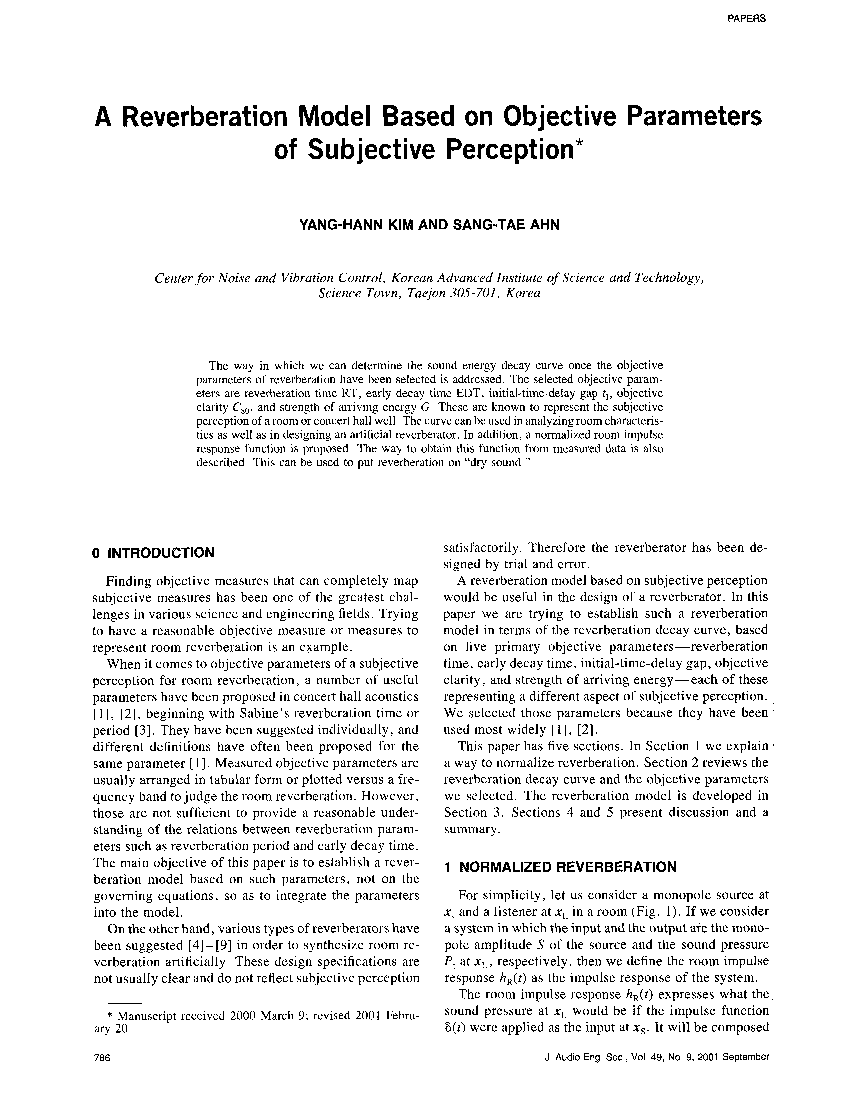Home / Publications / E-library page
You are currently logged in as an
Institutional Subscriber.
If you would like to logout,
please click on the button below.
Home / Publications / E-library page
Only AES members and Institutional Journal Subscribers can download
The way in which we can determine the sound energy decay curve once the objective parameters of reverberation have been selected is addressed. The selected objective parameters are reverberation time RT, early decay time EDT, initial-time-delay gap tI, objective clarity C80, and strength of arriving energy G. These are known to represent the subjective perception of a room or concert hall well. The curve can be used in analyzing room characteristics as well as in designing an artificial reverberator. In addition, a normalized room impulse response function is proposed. The way to obtain this function from measured data is also described. This can be used to put reverberation on "dry sound."
Author (s): KIM, Yang-Hann; AHN, Sang-Tae
Affiliation:
Center for Noise and Vibration Control, Korean Advanced Institute of Science and Technology, Science Town, Taejon, Korea
(See document for exact affiliation information.)
Publication Date:
2001-09-06
Import into BibTeX
Permalink: https://aes2.org/publications/elibrary-page/?id=10177
(725KB)
Click to purchase paper as a non-member or login as an AES member. If your company or school subscribes to the E-Library then switch to the institutional version. If you are not an AES member Join the AES. If you need to check your member status, login to the Member Portal.

KIM, Yang-Hann; AHN, Sang-Tae; 2001; A Reverberation Model Based on Objective Parameters of Subjective Perception [PDF]; Center for Noise and Vibration Control, Korean Advanced Institute of Science and Technology, Science Town, Taejon, Korea; Paper ; Available from: https://aes2.org/publications/elibrary-page/?id=10177
KIM, Yang-Hann; AHN, Sang-Tae; A Reverberation Model Based on Objective Parameters of Subjective Perception [PDF]; Center for Noise and Vibration Control, Korean Advanced Institute of Science and Technology, Science Town, Taejon, Korea; Paper ; 2001 Available: https://aes2.org/publications/elibrary-page/?id=10177